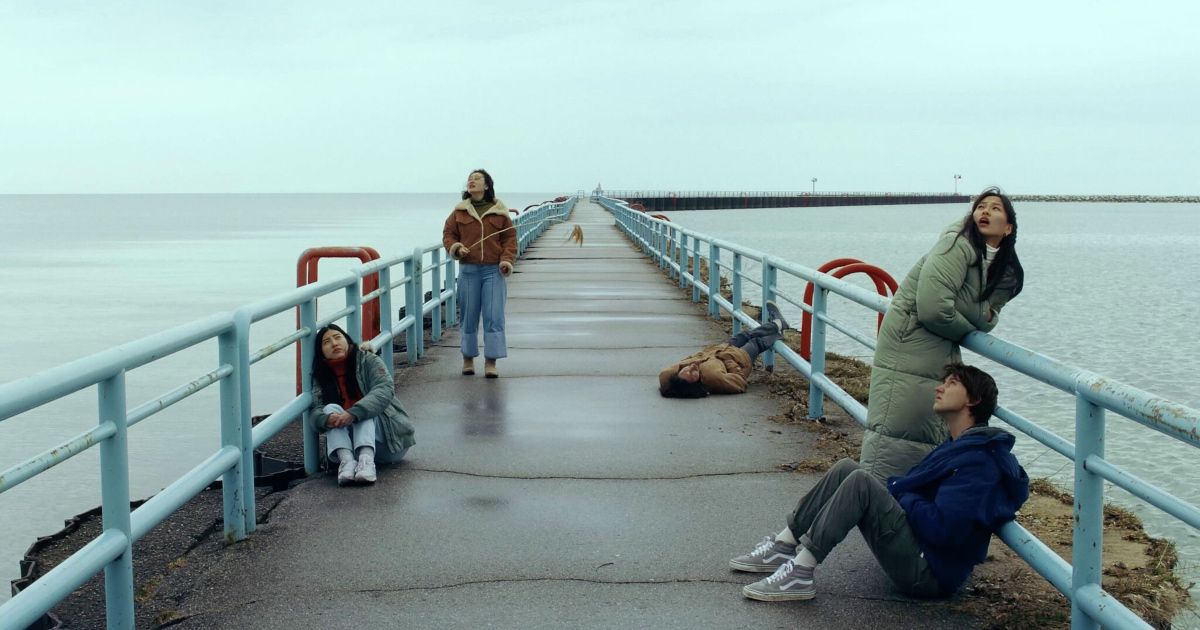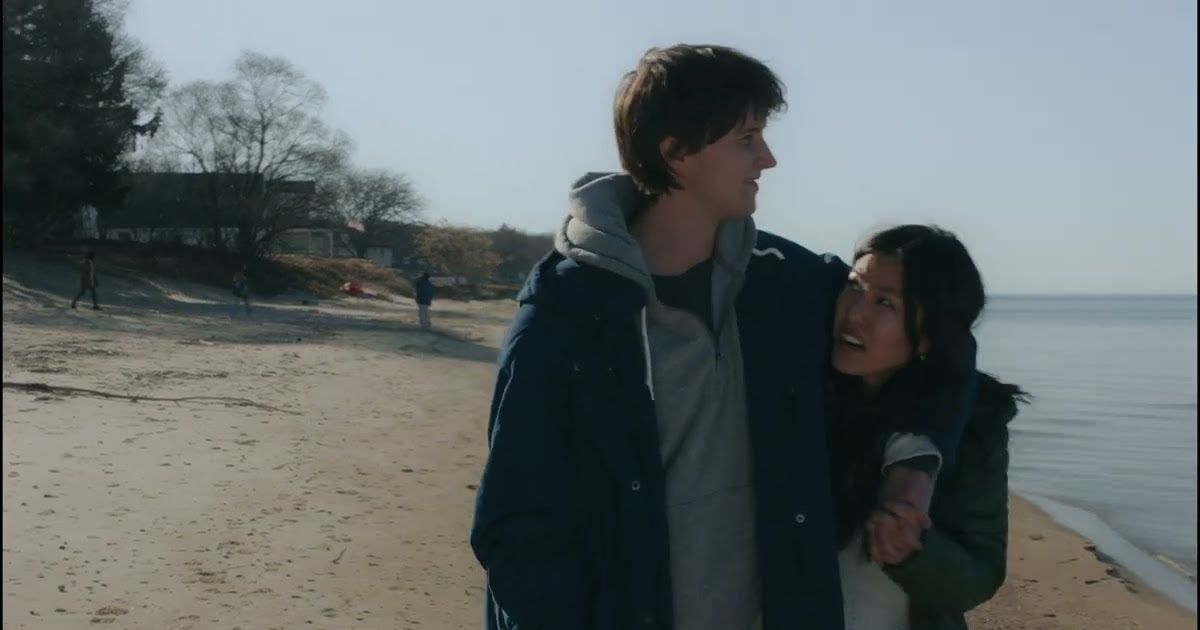Summary
- The film Waiting for the Light to Change offers a fresh perspective on mental health from the point of view of Generation Z, highlighting the struggles faced by young adults today.
- The movie’s authentic dialogue and intimate scenes effectively capture the anxieties and complexities of being a young adult and navigating relationships.
- With stunning cinematography and a focus on external versus internal conflicts, the film portrays the isolation and tension experienced by the characters, offering a realistic and relatable depiction of life in one’s 20s.
Since the COVID-19 pandemic, it’s become commonplace to talk about how the youths are sad, depressed, and lonely. Statistically, these conversations are in the right — the mental health rates around the world, especially during and after the COVID-19 pandemic, are increasingly bleak. For many countries, this has become a crisis among teenagers and young people, leading for calls for change when it comes to access for mental health resources and providers.
The mainstream film world is ripe with older filmmakers that aren’t a part of this generational cohort, which makes talking about these subjects through cinema more uncommon nowadays — although there are plenty of films that dwell on mental health, just not always from the perspective of Generation Z.
However, movies like Waiting for the Light to Change are gradually shifting that perspective in film — and they’re led by the same young people who are now graduating from film schools and picking up cameras for the first time. Director Linh Tran makes her debut with the film, which is about a group of young people who pack up and head for a vacation at a Michigan lake house in the middle of winter. Tran was able to make the movie through the MFA program at DePaul University in Chicago, which had a budget of only $20,000 according to Tran’s interview with The Film Stage.
With the funding and support from the university for its creation, the film then had its premiere at the 2023 Slamdance Film Festival, where it won the Grand Jury Prize at the festival. Afterward, the rights for the film were then acquired by Freestyle Digital Media, and the movie is expected to have a wider distribution in the Fall. A character-driven film, it’s definitely one worth scoping out.
Life on the Brink of Change
The premise of Waiting for the Light to Change is initially a simple one: a group of five young people, two men and three women, are coming together for a trip at a lake house in Michigan. Some know each other quite well, whether romantically or intimately, but others are meeting for the first time when they arrive at this scenic, isolated house. One prominent storyline threaded throughout the movie is one about the character of Amy (Jin Park). Having gone through a period of dramatic weight loss, Amy now grapples with the changing circumstances of her life.
Her friend Kim (Joyce Ha) is also attending this little getaway trip, and Kim has brought along her boyfriend Jay, who they all know from high school. They have not been dating for long, and Kim and Amy themselves have been separated for a long time as well. They were previously good friends in high school, but as it turns out, Amy has feelings for Jay and that attraction is going to complicate their trip even more. Each character is brimming with tension, especially as they grapple with the tension of what it means to be a young adult in today’s world.
At one point in the film, the characters reminisce at how they thought that being 22 meant that they were becoming old. One sighs and mentions how at 25 she feels like she hasn’t accomplished anything yet. It’s the small moments like these in Waiting for the Light to Change that feel so powerful, capturing the anxieties and spirit of being caught between youth and adulthood today. Each of the five main characters that has come to this lake house has their own set of problems, but their issues begin to overlap the longer they spend time with each other.
With little to do except lay on the couch and read, talk to each other, or go out and explore the nature surrounding them, the characters are forced to confront the reality of their lives and the situation in front of them. Two friends, formerly thick as thieves, are going to realize they may not recognize the person in front of them anymore, while there’s the ever-present feeling of loneliness engulfing every single one of them despite being surrounded by each other. This is the transient nature of one’s 20s, and there’s quite a bit of angst to pass around.
Intimate Shots and Deep Conversations
For some movies that dwell on this genre, dialogue isn’t enough to keep the pacing going. Although Waiting for the Light to Change takes its time to get through its full hour and a half run time, the conversations that take place between characters feel pretty real. Whether it’s an awkward breakfast together the first morning everyone’s in town or two of the girls, one sitting on her bed and the other on the floor, discussing their secrets when someone else is out of the room, everything feels fairly authentic. It can be difficult to pull these kinds of scenes off, but this film passes it off naturally.
At the same time, other scenes feel a little forced, despite the conversations smoothly coming to pass on-screen. There’s a simple, straightforward nature to this movie, especially as the characters talk about little things about their lives. It’s reminiscent of the works of Hong Sang-soo, who is famous for making movies that appear a certain way on the surface level. We may not have Kim Min-hee dancing across the screen in a movie like Waiting for the Light to Change, but instead we have conversations that offer a deeper glimpse into the true nature of these characters’ lives and stories.
That said, with five characters to dive into throughout the runtime, we spend time with each of them learning about their various situations and what led them to this point. While Kim might seemingly be thriving after her college career and seems like the best of the five to succeed from the traditional perspective of what one’s life should look like, even she is struggling with the fact she has to be perfect and have everything together.
For Jay, he admits at one point his father died recently, which shows he’s quietly grieving in his own way. For a character like Amy, she was unable to find a job after graduating with her bachelor’s and is now trying to reroute her life. Although the focus diverts at times depending on whom the camera is following at that moment, Waiting for the Light to Change isn’t about a singular story. It’s truly capturing the essence of the generation that’s depicted on-screen, showing that everyone manifests similar universal feelings despite bringing something completely different to the table and the broader tapestry of their shared lives.
Isolated, Gorgeous Cinematography
Despite everything going on between the characters and in their personal lives, the shots of the beach in winter and the dry, withered plains of the Michigan setting would make anyone want to go there. Waiting for the Light to Change makes heavy use of the external to isolate the internal elements of conflict. With the juxtaposition between the big, outdoor spaces and the characters inside their small, slightly cramped cabin, it blows up the minuscule at times and allows the tension to brew even more than it already is. In the large world outside, they’re physically small, making everything seem so obsolete in the long term.
However, it’s worth noting that a movie like this probably isn’t for everyone. Regardless of the relatability and the beauty of the cinematography, the slow pace and issues at hand might not tap into an older demographic that would find it too moody. Others looking for a neat conclusion may also find themselves disappointed by the lack of resolution by the film’s end, although this is what’s ultimately most realistic about life itself. Many 20-somethings today might find themselves seen in the subject and although these issues will come to pass for the characters, it’s worth acknowledging.
Overall, Waiting for the Light to Change is an impressive debut effort from filmmaker Linh Tran. To take a group of people largely trapped inside due to the winter and subtly bring out the tension between them, the underlying conflicts that are waiting to burst, is an impressive feat. Tran has established their work as something to keep an eye out for in the future, and has deserved the accolades it received for Waiting for the Light to Change.
Waiting for the Light to Change is currently screening at the Asian American International Film Festival in New York.
This story originally appeared on Movieweb



